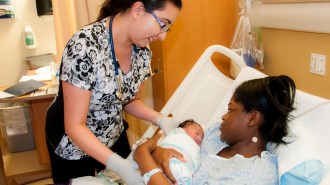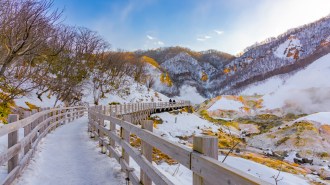Feds probe Gulf spill health risks
House committee heard charges of BP interference with worker protection.
The Institute of Medicine will be hosting a small public workshop in New Orleans, June 22 and 23, on possible health risks to Gulf coast residents and workers in the wake of the catastrophic Deepwater Horizon oil spill. A June 16 congressional hearing previewed some of the concerns likely to arise at the meeting. They ranged from potential long-terms risks of DNA damage to claims that BP failed to provide protective gear to contract crews hired to clean up oil.
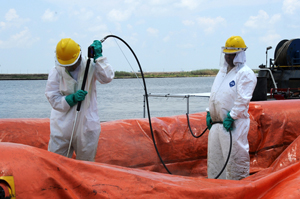
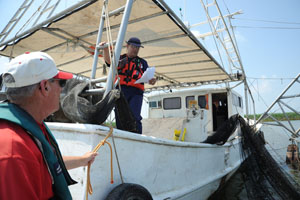
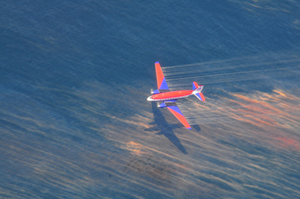
Based on populations that had encountered oil spills and cleanup operations elsewhere, health-care workers should expect to see respiratory and skin irritation, and probably behavioral problems, such as stress, depression and anxiety, a panel of Health and Human Services officials told members of a House Energy and Commerce subcommittee. But how prevalent these complaints might be and what type of exposures might trigger them remains hard to predict.
“We have very scant information, in general, about oil spills,” said John Howard, director of the National Institute of Occupational Safety and Health (part of the Centers for Disease Control and Prevention). “It’s come from a few studies of oil tankers that have run aground. We have some information about acute irritant effects. We have some information about psychological stress in the communities. We have practically none about chronic effects.”
But several efforts are underway to learn more. For instance, CDC has begun tracking surveillance data on possible spill-associated illnesses. And at the end of May, HHS worked with the Louisiana Department of Health and Hospitals to set up a mobile medical unit in Venice, La., to provide triage and basic care to responders and others. Data from the 140 patients treated so far are helping identify spill-linked risks, according to Lisa Kaplowitz, HHS’s Deputy Assistant Secretary for Policy.
Prestige lessons
Several references throughout the hearing were made to the 2002 Prestige oil tanker spill in Spain. Rep. Frank Pallone, Jr. (D-N.J.) noted in his opening statement that people exposed to oil from this spill “suffered from respiratory complications several years after exposure.”
And Rep. Donna Christensen (D-V.I.) noted that a recent study of beach cleanup workers and volunteers in Spain “reported an increase in DNA damage” attributable to the spill. Are such effects worrisome, she asked? Yes, they are a concern, the panel told her.
How much of a concern? The federal interagency group probing possible health effects from the current Gulf spill has “connected with the research group from Spain,” to help figure that out, said Aubrey Miller, senior medical advisor to the National Institutes of Environmental Health Sciences. He said the federal agencies “are evaluating not only their materials but will be working with [the Spanish group] closely to look at some of their results” with the hope that they “will help inform us” as U.S. agencies design and launch new spill-related research.
And there could be plenty of new studies developed to redress the lack of data on spill effects generally. The day before at an unrelated hearing of the same health subcommittee, National Institutes of Health Director Francis Collins pledged to set aside $10 million of NIH spending for new research on the effects of this spill.
Concerns about dispersants
The issue of oil dispersants emerged repeatedly during the June 16 hearing, with questions about whether these chemicals might aggravate any risks posed by the oil. Howard expressed concern over aerial spraying of those dispersants during the early weeks of the spill. “From the health and safety perspective, we’re not fans of dispersants,” he said of CDC. “Aerial spraying really puts it [dispersant] in all sorts of exposure zones that we do not think is safe.”
He noted, for instance, that “there was aerial spraying of dispersants up until about two or three weeks ago.” This spraying, he said, “was correlated with the illness that the nine fishermen had that we’re investigating.” And that’s why, he said, “We’re delighted that the [remaining] application of dispersant is only subsurface.” That said, he acknowledged that workers where oil-dispersant mixes bubble up from the seabed still “may be at risk.”
How big a risk? “That’s unclear,” he said, because almost no data exist on the types of exposures workers and volunteers are encountering.
Who’s got a respirator?
Members of Congress also brought up the issue of confusing or contradictory messages about the value of protective gear that oil-spill responders and people living along the Gulf coast have received in recent weeks. At a June 7 field hearing in Chalmette, La., the Committee’s subcommittee on Oversight and Investigations heard from families and others about health concerns associated with spill.
Wilma Subra testified on behalf of the Louisiana Environmental Action Network and Lower Mississippi Riverkeeper. Initially, Subra said, BP refused to provide protective respirators, gloves, goggles and sleeve covers to sidelined fishing crews that had been recruited for spill cleanup activities. But when crews became sick, some went to court, Subra reported, and a U.S. District Court judge oversaw a consent decree in which “BP agreed to take responsibility to ensure workers were properly trained in Hazmat protocol and provided all necessary equipment at BP’s expense.”
But even after that, she testified, in some instances “BP failed to provide respirators to the workers exposed to the crude oil.” Even after some of those workers got sick, they seldom spoke up, she said, for fear of losing the only work available to them. Particularly troubling, she said, “Those fishermen who attempted to wear respirators while working were threatened to be fired by BP due to the workers using respirators.”
Some shrimpers who refitted their boats with oil skimmers were forced to pull in oily pads with their bare hands, she said, for lack of protective gear. On May 26 and again on May 28, some of these workers were hospitalized with headaches, nausea, dizziness and chest pains. The community groups Subra works with are now attempting to get protective gear to such contract clean-up workers.
“There’s been a general systemic failure from BP to ensure the safety and health of the responders,” said Rep. Lois Capps (D-Calif.), citing an internal Department of Labor memo. News photos have repeatedly shown cleanup crews hired by BP working without protective gear, she observed, and crews have described being offered no training in use of such gear. This despite the fact that the Louisiana Department of Environmental Quality and state Department of Health and Hospitals both recommend oil-cleanup crews avoid skin contact with oil and inhalation of fumes through use of appropriate protective gear.
“BP has made clear that they are incapable of making the protection of the public health their priority,” said Capps, a former nurse. “That’s why I have written to the Obama administration urging it to relieve BP of their role in the public-health response.”
More complaints about BP
No one knows how many people may have been exposed to toxic fumes or oil products, but HHS agencies are attempting to assemble a database of most such individuals. To date, Howard says, federal health-care agencies have “rostered” 13,000 people. Rostering, he explained, amounts to collecting a list of people who may have been exposed based on their employment in cleanup operations, their having gone to local health-care facilities with problems that might be due to hydrocarbon exposures, and their phone calls to poison control centers.
Has BP done all it can to help, Howard was asked? No. NIOSH asked weeks ago for a list of all of the workers and volunteers that had signed up with BP for spill-response activities, he said. And to date his agency hasn’t received anything. The expectation, he says, is that the current roster of exposed individuals is probably short by at least several thousand individuals.
Federal efforts to identify any health risks attributable to the spill have been costly and are far from over. But “[HHS] Secretary Sibelius wrote to the BP chairman saying that she expected all of our work in support of the response to be reimbursed [by BP],” Howard noted. And HHS is keeping track of its expenses, he added.
Good, quipped Rep. Anna Eshoo (D-Calif.): “Let us know when the check arrives.”




